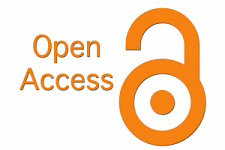Post-Election Violence in Africa: The Case of the CEMAC Sub-Region
DOI:
https://doi.org/10.5281/zenodo.10710610Keywords:
embrace, management, organizations, departureAbstract
Since 1990 contested elections have again become a regular fixture of the political systems of subSaharan Africa. But what do they mean? In this issue of post-election violence in Africa, we shall consider some elections within the African continent, most especially within the CEMAC Region and the lessons that can be drawn from them, both for democracy and for best electoral practice. None of these elections was ‘typical’ for the continent. All were fiercely contested. Those in Cameroon, Gabon, Chad, Central Africa Republic and the Republic of Congo. Each has something important to say about the meaning of elections in Africa and the challenges that arise in running them well. From across the continent, election-related violence has imposed itself as a full component of Africa’s political landscape in the past two decades. The prevalence of such violence in Africa has led to the production of abundant literature dedicated to the matter. This research seeks to contribute to the existing academic literature by focusing specifically on the patterns, causes and consequences of post-election-related violence within the CEMAC sub-region. The central argument of the article is that, although the patterns, causes and consequences of electionrelated violence do not necessarily follow the same trends in different African countries (due to, among other factors, inter-country historical, socio-economic and political differences), there are similarities in the types, causes and consequences of such violence on the continent. While a thorough understanding of the patterns and causes of election-related violence in Africa constitutes an important point of departure in addressing the problem, an effective prevention strategy should embrace a multi-level approach targeting all significant stakeholders in any electoral process, including the political leadership, the electoral management body, civil society organizations, the general public and external partners.
References
Aalen, L & K Tronvoll. 2009. ‘The end of democracy? Curtailing political and civil rights in Ethiopia’. Review of African Political Economy 36(120)
Adolfo, E V, M S Kovacs, D Nyström and M Utas 2012. ‘Electoral violence in Africa’. Policy Notes 3. Nordic Africa Institute.
Birch, S., Daxecker, U., & Höglund, K. (2020). Electoral violence: An introduction. Journal of Peace Research, 57(1), 3-14.
Carothers, T. 2007. ‘The “sequencing” fallacy’. Journal of Democracy 18(1).
David, K. “Elections and Conflicts in Africa” (2009) Journal of African Election. Vol. 12
Good, K. 2002. The Liberal Model and Africa: Elites Against Democracy. New York: Palgrave
Humphreys, M. 2005. ‘Natural resources, conflict, and conflict resolution: Uncovering the mechanisms’. Journal of Conflict Resolution 49(4), pp 508-537
Kunkeler, J & K Peters. 2011. ‘“The boys are coming to town”: Youth, armed conflict and urban violence in developing countries’. International Journal of Conflict and Violence 5(2), pp 277-291
Laakso, L. (2007). Insights into Electoral Violence in Africa. En M. Basedau, G. Erdmann, & A. Mehler, Votes, Money and Violence: Political Parties and Elections in Sub-Saharan Africa (págs. 224-252). South Africa: University of KwaZulu-Natal Press.
Maina, G. 2011. ‘Mediating to governments of national unity – a conflict transformation approach’. ACCORD Policy & Practice Brief 2
Mehler, A. (2007). Political Parties and Violence in Africa: Systematic Reflections against Empirical Background. In M. Basedau, G. Erdmann, & A. Mehler, Votes, Money and Violence: Political Parties and Elections in Sub-Saharan Africa (pp. 194-223). South Africa: University of KwaZulu-Natal Press.
Nigel, W. Chad: Prospects after the 2021 Election. House of Commons Library
Sadiki, T. ‘Understanding Elections-Related Violence in Africa. Patterns, causes, consequences and a framework for preventive Action’. (2013) Journal of African Election. Vol.12, No.3
Downloads
Published
Issue
Section
License

This work is licensed under a Creative Commons Attribution-NonCommercial 4.0 International License.
You are free to:
- Share — copy and redistribute the material in any medium or format
- Adapt — remix, transform, and build upon the material
- The licensor cannot revoke these freedoms as long as you follow the license terms.
Under the following terms:
- Attribution — You must give appropriate credit , provide a link to the license, and indicate if changes were made . You may do so in any reasonable manner, but not in any way that suggests the licensor endorses you or your use.
- NonCommercial — You may not use the material for commercial purposes .
- No additional restrictions — You may not apply legal terms or technological measures that legally restrict others from doing anything the license permits









